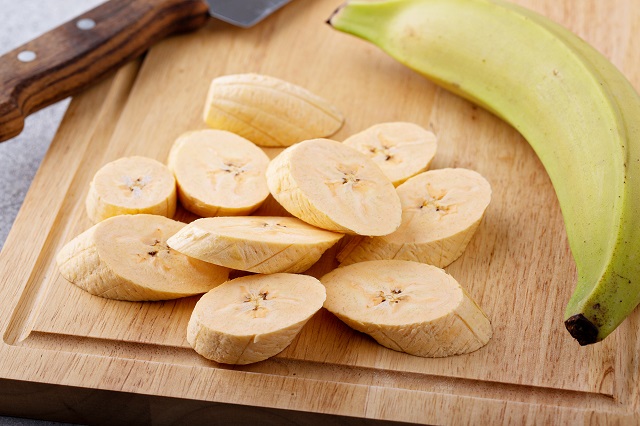10 easy ways for women to boost fibre

A diet rich in fibre is key for developing a healthy microbiome – which, in turn, helps with proper food digestion, metabolism regulation and boosting immune response. By creating bulky faeces, it also lowers the risk of constipation (an everyday headache for women).
What fibre does…
More fibre can lower the likelihood of obesity, diverticulitis, haemorrhoids and diseases such as bowel cancer, heart disease and diabetes. That’s why it should pay a pivotal role in anyone’s diet.
Here are my 10 top ways to eat more gut-loving fibre:
1. Eat a breakfast cereal that has more than 10 grams of fibre per 100 grams.
Examples are All-Bran, Sultana Bran, Vita-Brits, Weet-Bix, Shredded Wheat, Weeties and many mueslis.
Fibre: 13 grams per ½ cup or a 45 g bowl of All-Bran or bran flakes
OR 7 grams per ¾ cup or a 45 g bowl of Sultana Bran
OR 4 grams per ¼ cup or a 30 g bowl of muesli
- Alternatively sprinkle 2 tablespoons of wheat bran or oat bran over any cereal. This adds 3 to 4 grams of fibre.
- Rolled oats or porridge are among the healthiest grain foods on the planet. They’re very high in fibre.
- A cup of cooked rolled oats gives you 5 grams of fibre.
2. Add beans (legumes or pulses) to your recipes as and when you can.
Fibre: 4-8 grams per ½ cup or 100 g cooked legumes
OR 7 grams per small can (130 grams)
3. Add half a sliced banana or a half-cup of berries on top of your cereal.

Fibre: 2 grams per small banana
Fibre: 2 grams per punnet 75 g blueberries
Other high-fibre fruit are pears, prunes and any of the berries.
4. Make 50 per cent of your grains whole grain.
Wholemeal or grain bread is one way. Rice is hard, adapting to brown rice isn’t easy and it doesn’t give you that much more fibre. Wholemeal pasta gives you about four times more fibre than white pasta.
Fibre: 4 grams from 2 slices of wholemeal or mixed grain or white high-fibre bread

5. Be creative with vegetables – undercook then finish off with a dressing or else a splodge of honey.
Fibre: 3 grams from a small carrot
Almost all vegetables contain significant amounts of fibre. Other notable examples are green peas, sweetcorn, Brussels sprouts, cabbage, cauliflower, broccoli, beetroot, taro and kumera (orange sweet potato).
6. Eat a handful of nuts as a snack.
Fibre: 2 grams per 30 gram snack (a handful) of almonds, walnuts or Brazil nuts
Most nuts are good sources of fibre so really add any nut (whether pistachio or cashews) works well here.

7. Snack on air-popped popcorn.
Fibre: 2 grams per cup - which weighs only 8 grams
8. Choose soup with veggies and legumes.
Fibre: 2 grams per bowl
Try my Do-nothing lamb and legume soup.
9. Look for desserts with fruit instead of something creamy.
Here I mean apple and rhubarb crumble rather than cheesecake. Ice-cream with stewed plums, rather than plum pudding.
Fibre: 5 grams per serve
10. Add chia seeds to your recipes.
 Fibre: 6 grams for a tablespoon 15 grams
Fibre: 6 grams for a tablespoon 15 grams
- Sprinkle a tablespoon on your cereal or mix in to your muesli.
- Mix 1 tablespoon into 1 cup of water and add the gel that’s formed to smoothies, juices, yoghurts and soups.
All seeds are high in fibre but chia are particularly good. Other good choices are linseeds (flaxseeds), sunflower seeds and pumpkin seeds.
How much fibre do women need?
Here’s what we need for different ages and stages, according to the Nutrient Reference Values:
- For all ages, from 19 to over 70 years, women need 25 grams a day.
- During pregnancy, this increases slightly to 28 grams a day.
- During breastfeeding, you need 30 grams a day – which is the same as men’s requirement.
You can reach this goal of 25 to 30 grams a day by selecting:
a bowl of bran cereal
+
2 slices wholemeal or grainy bread
+
2 pieces of fruit
+
1 serve of vegetables
+
1 cob of corn
Already hitting your 30 grams of fibre a day? It’s not necessarily the ‘golden’ number, so why not try getting more, say 50 grams – our ancestors had around 100 grams of fibre a day.
The bottom line
Try adding any of the above foods to easily increase your fibre intake. Fibre is an important nutrient that promotes a healthy microbiome, boosts weight loss, lowers blood sugar levels and fights constipation.
A word of warning however – do this gradually especially in the early stages, say over the first 3 days, and drink lots of water to prevent gassiness and bloating and get your body used to more fibre.
Click here to buy a List of Foods high in fibre.



